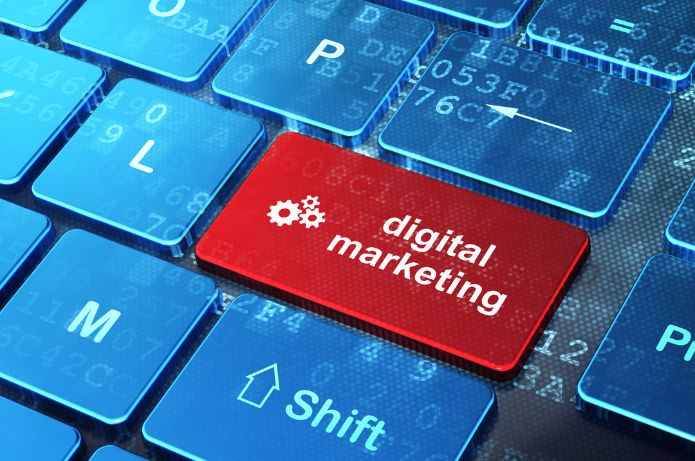Introduction
Marketing automation is a concept that has gained increasing relevance in the contemporary business landscape. In a world where efficiency and personalization are crucial for the success of marketing strategies, automation emerges as a powerful tool to optimize processes, improve customer engagement, and increase the return on investment (ROI) of marketing campaigns.
Definition
Marketing automation refers to the use of software and technologies to automate repetitive marketing tasks, marketing workflow processes, and measure campaign performance. This approach enables companies to deliver personalized and relevant messages to their customers and prospects across various channels in an automated manner, based on behaviors, preferences, and previous interactions.
Key Components of Marketing Automation
1. Automated Email Marketing
– Email sequences triggered based on specific user actions
– Personalized lead nurturing campaigns
– Automated transactional emails (order confirmations, reminders, etc.)
2. Lead Scoring and Qualification
– Automatic assignment of scores to leads based on behaviors and characteristics
– Automatic lead qualification for prioritizing sales efforts
3. Audience Segmentation
– Automatic division of the contact database into groups based on specific criteria
– Personalization of content and offers for different segments
4. CRM Integration
– Automatic synchronization of data between marketing platforms and CRM systems
– Unified customer view for marketing and sales
5. Landing Pages and Forms
– Creation and optimization of landing pages for lead capture
– Smart forms that adapt based on the visitor's history
6. Social Media Marketing
– Automatic scheduling of social media posts
– Monitoring and analysis of social media engagement
7. Analytics and Reporting
– Automatic generation of campaign performance reports
– Real-time dashboards for key marketing metrics
Benefits of Marketing Automation
1. Operational Efficiency
– Reduction of manual and repetitive tasks
– Freeing up team time for strategic activities
2. Personalization at Scale
– Delivery of relevant content to each customer or prospect
– Improvement in customer experience through more personalized interactions
3. Increased ROI
– Campaign optimization based on data and performance
– Better allocation of marketing resources
4. Marketing and Sales Alignment
– Better lead qualification and prioritization for the sales team
– Unified view of the sales funnel
5. Data-Driven Insights
– Automatic collection and analysis of customer behavior data
– More informed and strategic decision-making
6. Communication Consistency
– Maintenance of a consistent message across all marketing channels
– Assurance that no lead or customer is neglected
挑战与考量
1. System Integration
– Need to integrate various tools and platforms
– Potential compatibility issues and data synchronization problems
2. Learning Curve
– Training required for teams to effectively use automation tools
– Time required for adjustment and optimization of automated processes
3. Data Quality
– Importance of maintaining clean and updated data for automation effectiveness
– Need for regular data cleansing and enrichment processes
4. Balance Between Automation and Human Touch
– Risk of appearing impersonal or robotic if not implemented correctly
– Importance of maintaining elements of human interaction at critical points
5. Compliance with Regulations
– Need to adhere to data protection laws such as GDPR, CCPA, LGPD
– Management of communication preferences and opt-outs
Best Practices for Implementation
1. Clear Definition of Objectives
– Establish specific and measurable goals for automation initiatives
– Align automation objectives with overall business strategies
2. 客户旅程映射
– 了解客户旅程的不同阶段
– 识别关键自动化触点
3. 有效细分
– 基于人口统计、行为和心理特征创建受众细分
– 为每个细分群体定制内容和消息
4. 测试与持续优化
– 实施A/B测试以优化自动化营销活动
– 定期监控关键绩效指标并适时调整策略
5. 注重内容质量
– 为销售漏斗各阶段开发具有相关性和价值的内容
– 确保自动化内容保持人性化与真实性的沟通基调
6. 团队培训与能力建设
– 投资培训以最大化自动化工具的使用效能
– 培育持续学习与适应的团队文化
营销自动化未来趋势
1. 人工智能与机器学习
– 实施AI算法预测客户行为
– 运用机器学习实现营销活动持续优化
– 采用更智能的聊天机器人和虚拟助手进行客户服务
2. 超个性化
– 利用实时数据实现极致细颗粒度个性化
– 根据用户情境即时自适应的动态内容
– 基于人工智能的产品/服务推荐
3. 全渠道营销自动化
– 线上与线下渠道的无缝整合
– 全触点保持一致且个性化的体验
– 通过高级追踪归因获得客户旅程全景视图
4. 内容自动化
– 使用AI自动生成内容
– 相关内容自动策展与分发
– 基于实时表现的内容优化
5. 语音营销自动化
– 与Alexa、Google Assistant等语音助手集成
– 语音触发的营销活动
– 通过语音情感分析获取深度洞察
6. 预测性自动化
– 在客户表达需求前预先洞察
– 基于预测分析的主动干预
– 优化营销信息发送时机
7. 增强现实与虚拟现实营销自动化
– 自动化虚拟产品体验
– 个性化沉浸式营销活动
– 运用AR/VR的客户培训与入门引导
结论
营销自动化持续快速发展,正深刻改变企业与客户及潜在用户的互动方式。随着技术进步,个性化、效率与数据分析的可能性不断扩展,为那些懂得充分发挥这些工具潜力的组织提供了前所未有的机遇。.
但关键在于牢记:营销自动化并非万能解决方案。其成功依赖于周密规划的策略、优质内容、准确数据,以及最重要的是对客户需求与偏好的深刻理解。那些能平衡自动化力量与建立真实关系所需人性化触达的企业,将成为这场营销变革的最大受益者。.
随着我们迈向日益数字化和互联化的未来,营销自动化不仅将成为竞争优势,更是企业保持客户互动策略相关性与有效性的必然选择。当前的挑战与机遇在于:以符合伦理、具有创意且以客户为中心的方式运用这些工具,始终以提供真实价值与有意义体验为终极目标。.


